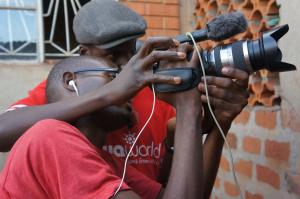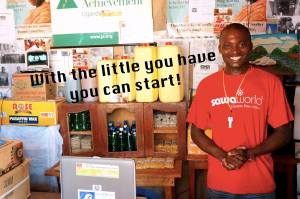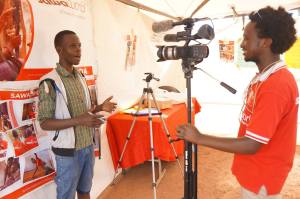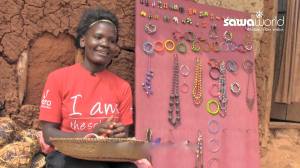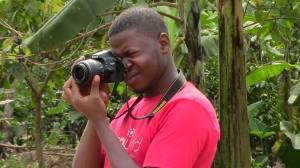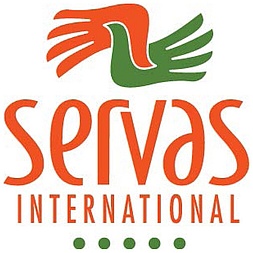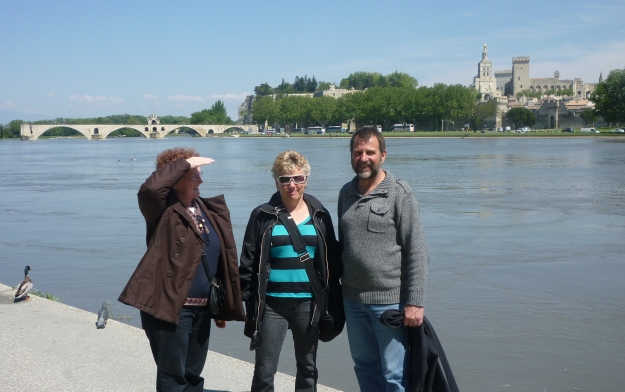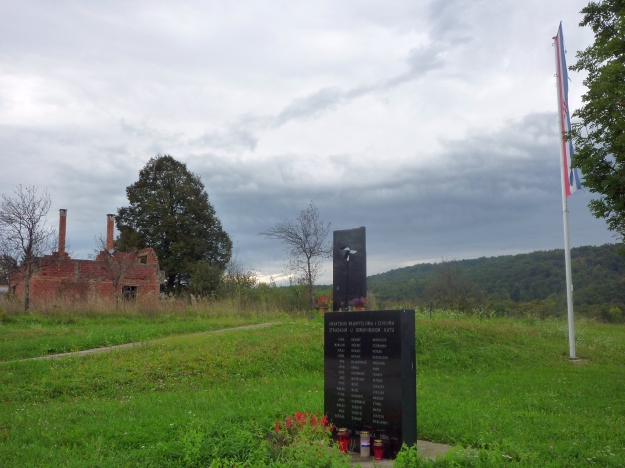The “problems” I’ve been blogging about here are definitely “first world problems”: low-cost travel, best mobile technology, staying active in retirement.
But I’m reminded that there are still a billion people in this world trying to get by on a dollar per day. This grinding poverty persists despite huge amounts spent on private and government foreign aid since World War II.
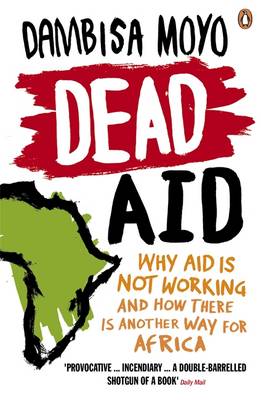
“Dead Aid” by Dambisa Moyo
Some say what’s needed is more aid – and more aid might help with specific problems, such as malaria, tuberculosis, and malnutrition. However, especially in Africa, there’ve been voices questioning the efficacy of government-to-government aid, and other forms of top-down “first world” solutions. In the post-War decades, there was development economist, Peter T. Bauer and his “Dissent on Development.” More recently, Zambia’s Dambisa Moyo published “Dead Aid”, so titled in reference to the famous “Live Aid” concerts. She argued that these programs have primarily served to keep populations beholden to charismatic dictators living high on Western largesse. It’s a sobering assessment. And while Moyo was more positive about the micro-finance movement, others have called into question a solution that facilitates widespread debt among the poorest of the poor.
At the same time, economists such as Peru’s Hernando de Soto Polar have suggested that the poor of the developing nations have the ability to lift themselves out of poverty, if only they could gain access to the civil and legal protections that we take for granted in the West. I suspect there’s much truth in that.
Still, I’ve often wondered if there might be ways to offer effective assistance. That’s why I was excited to learn of a small, young organization called “Sawa World.” Bearing the byline, “Solutions from within,” Sawa World’s summarizes its mission as follows: “We find inspiring innovators (Sawa Leaders) living in extreme poverty, that have created local solutions that are already working. Local youth ensure these successes are shared so others living in extreme poverty can replicate them.”
Sawa World’s original point of leverage was to secure training in New Media for unemployed youth in the poorest countries, and encourage them to publicize the ultra-low-capital successes of local homegrown entrepreneurs and social entrepreneurs so that others could emulate them. That model has evolved based on extensive feedback on its effectiveness. Over time, their video and outreach teams progressed to capturing these solutions step-by-step, to be shared with others in the community. Rather than take advice from well-meaning foreign advisors who lack local context, hopeful entrepreneurs can see that they already have the knowledge and resources to succeed, right in their own communities. Recently, Sawa World has focused on helping the most promising of these new entrepreneurs, dubbed “Sawa Sparks”, find local training opportunities.
The Swahili word “sawa” can signify “equal, right, true, good, or ok,” and perhaps all of them apply. The Sawa World approach is to focus on the poorest of the poor, those earning less than $1 US Dollar per day, and highlight “Sawa Leaders” who, from those same conditions, have been able to create a better living for themselves and others in their communities. Even the ability to earn an extra dollar or two a day makes an incredible difference. As Sawa World founder Daphne Nederhorst says, “$2 to $4 means that they can actually now pay their school fees, they can pay their basic necessities, and can pay their rent.”
The organization initially started work in five of the poorest countries: Haiti, Kenya, Uganda, Rwanda and Zambia. After some initial success, the founder decided to focus on one country while she ensured that her business model was as scalable and self-sustaining as possible. She wanted to make sure that every dollar donated to Sawa World would produce the maximum benefit in terms of self-sufficient entrepreneurship among the poor communities she was targeting. Ideally she would like Sawa World to be completely self-financed.
Uganda’s extreme youth unemployment rate – more than 60% by some estimates – made it an obvious choice. Sawa World looks for vulnerable, unemployed youth, and through local media organizations, trains them in audio-visual production, digital video editing, multimedia design, social media, and outreach & impact tracking methods. (If that sounds counter-intuitive, remember that, worldwide, more people have access to cell phones than to power or toilets.)
These young “citizen journalists” then scour their communities for inspirational examples of success, using their training to spread the word so that others can replicate their business models in the provision of water, food, shelter, education, health care, environmental protection, and gender-equal opportunity. To date, 253 young people have been trained as Sawa Youth Reporters, and together they’ve identified dozens of Sawa Sparks, and produced 100 videos. Over 16,000 people have been directly affected, and many times more indirectly.
Scores of new entrepreneurs have been trained and inspired to start their own operations in very short order, growing or producing essential commodities such as banana chips, briquettes from organic waste, chickens, clay stoves, herbal soap, honey from beehives, lemongrass tea, mushrooms, paper bags, paper beads, pineapple jam, rehydration salts, sanitary pads, and wallets. The most influential Sawa Leaders have provided training in how to make all of these items, often employing many others in the process. Sawa World reports, “Olivia Damali Sserabira has empowered over 46,000 vulnerable women in urban and rural settings in Uganda by providing employable and income generating skills training in eleven different areas through her organization, the Peace and Hope Training Centre.”
As promising as this is, Sawa World continues to search for even more effective ways to spread local business and technological knowledge where it will do the most good. For the past couple of years, the organization has sponsored a Sawa World Day in Kampala, Uganda. The idea is to bring community leaders together with vulnerable youth who can instantly learn skills to improve their livelihoods. Nederhorst had hoped to more than double last year’s attendance. “The impact that we want to have is that we want to host 10,000 vulnerable and unemployed youth from Uganda and the East African region and empower them with local, simple skills that allow them to start a small business the next day.”
She didn’t quite meet her target, but almost 5000 did attend Sawa World Day in Kampala in April 2015. Since the event, on the Sawa World Facebook page, there have been reports like the following: “This is Ritah from Uganda. She became homeless at a very young age when both of her parents died. Most recently a friendly lady in the community invited her to the Sawa World Day. There she learned how to make earrings and necklaces. Within two weeks she made 40 pairs and raised her income by 150,000 Ugandan Shillings ($50 USD). She also offered free trainings to 15 other orphaned girls in her community and now has a safe place to live.” Their statistics suggest that half of the attendees were able to do something similar within a matter of weeks.
It sounds like Daphne Nederhorst and Sawa World are onto something sustainable and scalable. As she says, “This allows other impoverished people to feel inspired and to replicate the solutions in their own communities. And it allows the Sawa Youth to find leadership in their communities, and in themselves – to become the Sawa Leaders of tomorrow.” As an indication that they believe they have honed their model, the Sawa World Team was recently invited to host a training in South Sudan, a new country on the brink of mass starvation.
Others are beginning to recognize this success. Nederhorst was a semi-finalist at the 2013 Forbes 400 Summit of Philanthropy at the United Nations. This year, Sawa World won the Saville Foundation’s Pan-African Award for contributions to development in Africa, and was featured on Virgin Unite, the non-profit foundation of the Richard Branson’s Virgin Group.
If you want to help out, check out their Donation page, where they list what you can enable with amounts as small as one dollar. (One DVD capturing a practical solution of a Sawa Leader: marketing material to support their work.) If you happen to be in Vancouver, Canada, you can visit their small shared office a few blocks from Science World. The day I visited, volunteer office manage Brittney Fehr was excited about her upcoming self-financed trip to Uganda for Sawa World Day, 2015.
If you happen to be in Kampala, sounds like you should have no trouble finding their office.
Related posts:
- Travel, Allophilia, and World Peace
- Travel the World without Leaving your Hometown
- Keeping Travel Alive between Trips
For more information:
- “First World Problems” (video by WaterIsLife)
- The Copenhagen Consensus III (2012)
- “Dissent on Development” by Peter T. Bauer
- “Dead Aid: Why Aid Is Not Working and How There Is a better Way for Africa” by Dambisa Moyo
- “The Other Path: The Invisible Revolution in the Third World” by Hernando de Soto Polar
- “Trade Beats Aid for the Developing World” (Foundation for Economic Education)
- “Poverty, Inc” (91 minutes – Acton Institute)
- “What Went Wrong with Microfinance” (Time)
- “Uganda’s unemployed graduates held back by skills gap” (The Guardian, Jan 16, 2014)
- “The mobile phone comes first in Africa; before electricity, water, toilets or even food”
- “South Sudan: Starvation threatens unless urgent action is taken” (Red Cross)
-
Sawa World: solutions from within
- A message from founder, Daphne Nederhorst
- Report on Sawa World Day 2015
- Follow their progress on Sawa World’s Facebook page
- Current volunteer opportunities (Vancouver-based)
- Support the work of “Sawa Leaders” with a donation
- “Grassroot-level innovations may hold the key to global challenges” (The Guardian, Apr 17, 2013)
- “Vancouverite’s campaign to support unemployed youth in Uganda gains international attention” (Georgia Straight, Jan 9, 2015)
- “I Am The Solution” (Virgin Unite)

